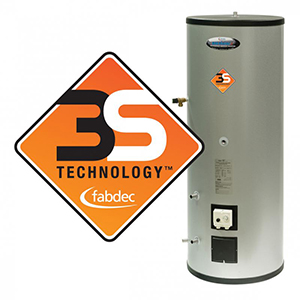The self-sustaining system and its role in social housing
Stuart Doggrell, water heating general manager at Fabdec, discusses how developments in self-sustaining cylinder technology could be the ideal solution to heating in social housing projects.
When looking to revitalise existing social housing stock, or ensure quality in new-build developments, innovations in water heating technology have a key role to play. One such innovation, self-sustaining cylinder technology, is particularly of note as it can help drive energy efficiency and lower costs in social housing – two key considerations for social landlords keen to provide a reliable service to tenants while tackling the dual concerns of cost and sustainability.
Technology in this area has been through three major evolutions, beginning with tanks that require an expansion vessel, through to the introduction of floating baffles, and finally the use of the Venturi effect to create the ultimate high-performance space-saving option.
Fabdec 3S technology takes full advantage of the Venturi effect, which negates the need for floating baffles and expansion vessels.
It does this by using the reduction in pressure that results when a fluid flows through a constricted section of pipe with no discernible restriction to the volume of water flowing through. In the process, a fluid's velocity increases as it passes through a constriction while its static pressure decreases. Any gain in kinetic energy a fluid may accrue due to its increased velocity through a constriction is balanced by a drop-in pressure.
This results in the mixing of liquid with air – or more specifically the induction of air bubbles into the water. It is this process that makes the patented 3S technology (Self-Sustaining System) unique, with the system now able to maintain an internal air gap as hot water is drawn off further upstream in typical usage. As it replenishes the internal expansion device permanently, there is no need for recharging or regular servicing.
It’s this reliability and lower reliance on repair work, minimising disruption from visiting workmen and saving money, that makes the 3S technology ideal for housing associations and residents of their developments, whether that be through retrofitting existing stock or new-builds.
In addition to delivering the high-water pressure required for high rise blocks, and lower costs and down-time necessitated by repair work, 3S technology allows water heaters to be contained in streamlined space-saving housing.
This means that in smaller developments installers can safely and reliably install units quickly, whilst allowing for greater living space for those that will eventually occupy the housing. This is a key benefit as it reduces the amount of time required for both installation and any potential repairs – providing a vast improvement from the installers perspective.




Add new comment